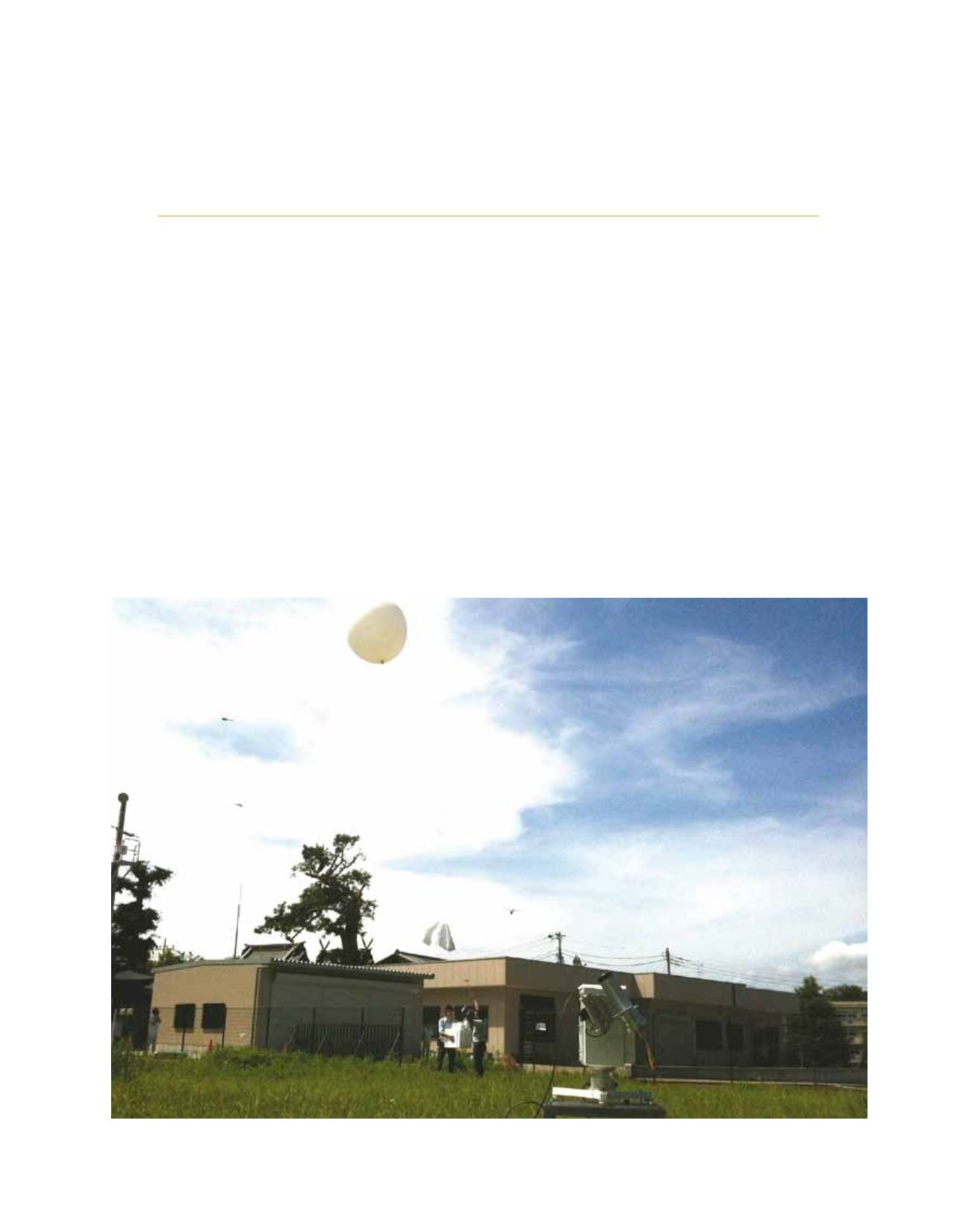

[
] 206
Better localised CO
2
measurement as a
component of accurate climate forecasting
Kensaku Shimizu, Mamoru Yamaguchi, Kenji Yamaguchi and Toshiaki Morita, Meisei Electric Co Ltd;
Yutaka Matsumi, Solar Terrestrial Environment Laboratory, Nagoya University;
and Gen Inoue, Atmosphere and Ocean Research Institute, University of Tokyo, Japan
M
eisei Electric is an enthusiastic supporter of the Global
Framework on Climate Services and all its principles,
particularly those that give high priority to the needs
of climate-vulnerable developing countries. The long-term moni-
toring of atmospheric carbon dioxide (CO
2
) concentrations is an
important aspect in forecasting accurately the increasing threat
of global warming, and its inevitable impact on weather and
climate. Such long-term global observations allow the predic-
tion of global warming feedback into the carbon balance and
contribute to global warming prevention strategy decisions on
what controls to implement on anthropogenic emissions.
At present,
in situ
methods are used for CO
2
measure-
ments at about 100 continuous observation stations
in the world. However, the observation points are
concentrated in the mid-latitude belt of the Northern
Hemisphere, where most developed countries are situ-
ated. In contrast, there are very few observation points
in tropical areas and developing countries. If more
observations points were implemented, then more
precise climate forecasts might be made by region or
country, particularly in those developing nations most
vulnerable to extreme weather and changes in climate,
E
cosystems
FES-C (foreground) and the CO
2
sonde
Image: Meisei Electric
















